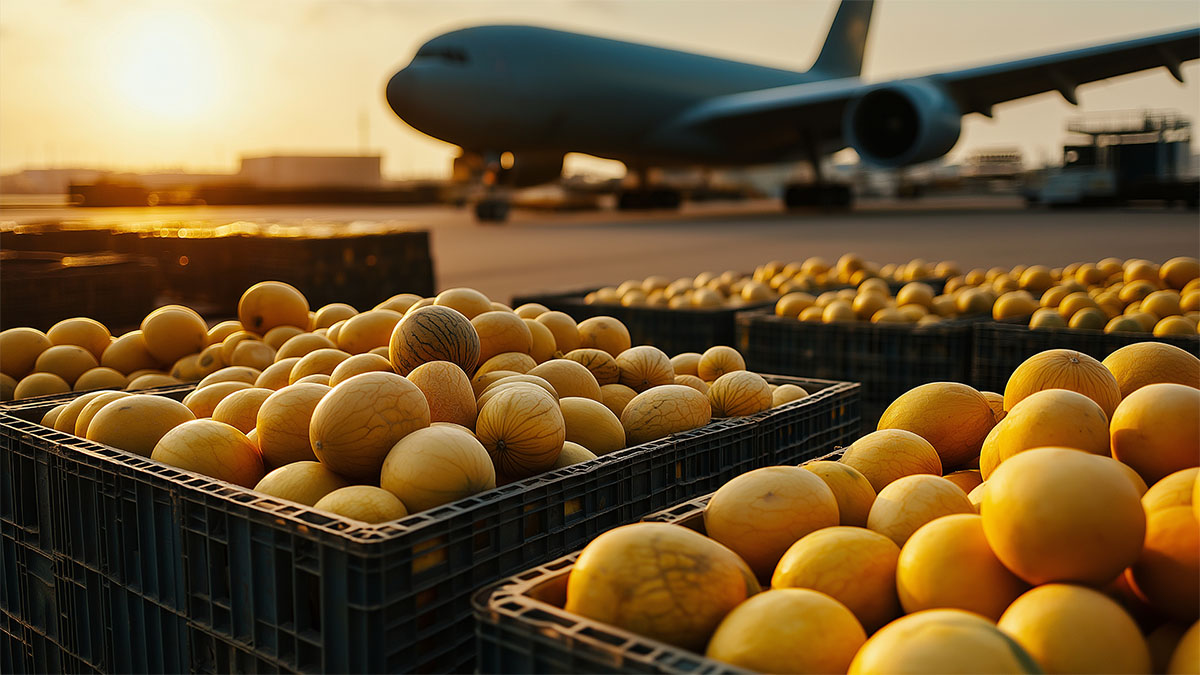When shipping around the world, perishable food customs clearance isn’t just a checkpoint; it’s a high-risk chokepoint. Fresh goods sitting in limbo for hours or days can cost you time and a lot of money.
- According to the World Bank, border delays can reduce the value of time-sensitive exports by up to 15%.
-
The Food and Agriculture Organization (FAO) estimates that approximately 14% of food is lost between harvest and retail.
What’s getting in the way? Most of the time, it’s a combination of customs clearance delays and regulatory documentation that is mismatched or missing.
Let’s walk through the key problems and the steps you can take to avoid them.
The Top Culprits Behind Perishable Customs Delays
Wrong or Vague HS Codes
Harmonized System (HS) codes identify the specific classification of your product for purposes of duties, documentation, and import regulations. If you categorize your item incorrectly, it can result to:
- Higher duties or taxes
- Rejection due to regulatory mismatch
- Penalties for non-compliance
For example, there’s a big difference between shipping “fresh Atlantic salmon” (HS Code 030214) and “frozen fillets” (HS Code 030484). If you get the code wrong, you may trigger inspection or require paperwork you don’t have.
How to Find the Right HS Code:
- Use tools like the World Customs Organization HS Database or U.S. HTS
- Ask your customs broker to confirm the code based on the exact product specs
- Double-check if there are import restrictions or document requirements tied to that HS code
Missing or Incorrect Documents
A lengthy list of documents is needed by customs authorities to clear your cargo. If anything is inaccurate or omitted, your shipment can be held, inspected, fined or outright rejected.
Perishables require more than a packing list and invoice. Many products need health, safety, and temperature-related paperwork. Without it, your shipment may get flagged or destroyed.
Documents Specific to Perishable Shipments
Phytosanitary Certificate
- For: Fresh fruits, vegetables, herbs, and other plant-based goods.
- Issued by: A national plant protection agency (e.g., USDA-APHIS).
- Why it matters: Confirms the shipment is free from pests or diseases and meets the importing country’s standards.
Veterinary Health or Sanitary Certificate
- For: Meat, poultry, dairy, seafood, and any animal-based product.
- Issued by: A licensed vet or health authority in the country of origin.
- Purpose: Proves the animals were healthy, the facility was inspected, and the product is safe for consumption.
Certificate of Origin
- For: Any item where country-of-origin affects tariffs or access to the market.
- Issued by: Chambers of commerce or relevant trade agencies.
- Purpose: Confirms where the product was grown, processed, or packaged.
FDA Prior Notice (U.S. Only)
- For: All food products entering the United States.
- Filed electronically: At least 2–8 hours before arrival depending on the mode of transport.
- Why it matters: Failure to file on time can result in rejection or seizure by U.S. customs.
Temperature Log / Cold Chain Documentation
- For: Any chilled or frozen perishable item.
- Purpose: Shows the product remained within the safe temperature range throughout transit.
- Includes: Data from IoT sensors, reefer logs, or airline-generated temperature logs.
Import Permit or Sanitary Authorization
- For: Regulated food items in countries like Brazil, India, and China.
- Issued by: The country’s food safety authority.
- Purpose: Confirms the importer has legal approval to bring in restricted items.
Labeling & Food Safety Compliance
- Checked by: Customs and food safety agencies.
- Must include: Ingredient list, allergens, nutrition info, expiration date, and country of origin—in the local language.
- Common issue: Products with English-only labels get held in regions like the EU, Canada, and the Middle East.
FSIS Inspection (U.S. Only – Post-Clearance Risk)
- For: Certain imports of meat, poultry, and processed egg products.
- Overseen by: USDA’s Food Safety and Inspection Service (FSIS).
- Why it matters: Even after a shipment clears U.S. Customs and Border Protection, FSIS may require a secondary inspection at an approved facility.
- The Risk: If the importer fails to properly schedule the FSIS inspection or the facility rejects the load, the entire shipment can be recalled or destroyed, even after it technically enters the country.
Global Perishable Food Customs Clearance Regulations Are a Moving Target
Even if your documentation is flawless, rules vary widely from one country to the next.
- The EU bans several additives commonly used in North America and requires dual-language labeling.
- China conducts batch-by-batch inspections and requires pre-approval for many food products.
- GCC countries may require Halal certifications and enforce specific packaging rules.
If your documentation or packaging doesn’t match what the country expects, the shipment could be delayed—or rejected altogether.
Best Practices for Perishable Food Customs Clearance
- Create a Master Compliance Checklist – Tailor it by product and destination. Make sure it includes both general customs documents and food-specific certificates.
- Use a Specialized Freight Forwarder – General freight companies can overlook perishables’ unique requirements. Choose a partner with proven experience in food logistics.
- Digitize Documents and Track Cold Chain Data – Tools like EZTrace from Zarach Logistics let you manage paperwork, real-time tracking, and temperature compliance—all in one platform.
- Research Every Destination – Stay ahead of changes. Subscribe to regulatory updates and work with local importers or legal advisors to stay compliant.
Your Cold Chain Is Only as Strong as Your Customs Strategy
In perishable logistics, delays don’t just cost time, they spoil product, strain buyer relationships, and cut into margins. Perishable food customs clearance and compliance aren’t just paperwork, they’re the backbone of your cold chain.
At Zarach Logistics, we help perishable food exporters and importers cut through customs delays with precision. From certificates to temperature tracking, we make sure your shipment gets where it’s going on time and intact.
Let’s talk. We’ll review your documentation flow, help identify weak spots, and streamline your next shipment from day one.



